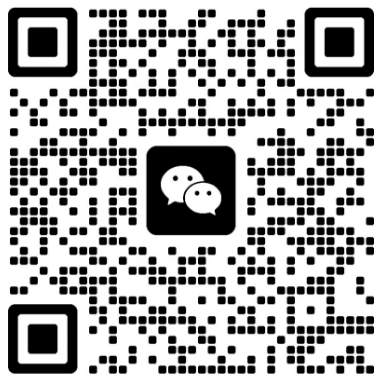NEW

Application Development in Parity Generators and Checkers for CFR-12JB-52-110R: Key Technologies and Success StoriesDeveloping applications for parity generators and checkers, especially in the context of a specific component like the CFR-12JB-52-110R, involves a blend of digital design principles, error detection techniques, and practical implementation strategies. Below, I outline key technologies and success stories related to this area.
Key Technologies1. Digital Logic Design2. Error Detection Techniques3. FPGA and ASIC Design4. Simulation and Testing Tools5. Embedded Systems1. Telecommunications2. Data Storage Solutions3. Consumer Electronics4. Automotive Systems5. Aerospace and Defense Success Stories ConclusionThe development of applications for parity generators and checkers, particularly in the context of components like the CFR-12JB-52-110R, leverages a variety of technologies and methodologies. The success stories across different industries highlight the importance of these systems in ensuring data integrity and reliability. As technology continues to evolve, the implementation of more sophisticated error detection and correction techniques will likely become even more critical in various applications. Future DirectionsAs we look to the future, advancements in machine learning and artificial intelligence may also play a role in enhancing error detection capabilities. By analyzing patterns in data transmission and identifying anomalies, these technologies could lead to more proactive error correction methods, further improving the reliability of systems that rely on parity generators and checkers. Additionally, the integration of quantum computing may open new avenues for error detection and correction, potentially revolutionizing the field.

S6008L PLDs: Core Functional Technologies and Application Development CasesProgrammable Logic Devices (PLDs), such as the S6008L, are essential components in modern electronic design, providing flexibility and efficiency across various applications. Below, we delve into the core functional technologies of PLDs and highlight several application development cases that showcase their effectiveness.
Core Functional Technologies of PLDs1. Reconfigurability2. Parallel Processing3. Integration4. Low Power Consumption5. High Density6. Development Tools1. Consumer Electronics2. Automotive Systems3. Telecommunications4. Industrial Automation5. Medical Devices6. Aerospace and Defense7. FPGA-Based Prototyping Application Development Cases ConclusionThe S6008L and similar PLDs provide a versatile and powerful solution for a wide array of applications, thanks to their flexibility, performance, and integration capabilities. As technology advances, the role of PLDs in various industries is expected to grow, fostering innovation and enhancing efficiency in electronic design and implementation. Their adaptability and efficiency make them a cornerstone of modern electronic systems, paving the way for future advancements in technology.

Overview of Digital Potentiometers: The 1N5241B-TDigital potentiometers, such as the 1N5241B-T, are integral components in contemporary electronic circuits, providing precise control over resistance values across a wide range of applications. Their advanced features and capabilities make them essential for enhancing the performance and functionality of various electronic systems.
Core Functional Technologies1. Digital Control 2. Non-Volatile Memory 3. I2C/SPI Interfaces 4. Multi-Channel Configurations 5. Programmable Resistance Values 1. Audio Equipment 2. Sensor Calibration 3. Medical Devices 4. Consumer Electronics 5. Automotive Applications 6. Robotics and Automation Application Development Cases ConclusionDigital potentiometers like the 1N5241B-T are vital components in modern electronics, offering precise control, programmability, and ease of integration. Their applications span diverse industries, including audio, medical devices, automotive, and robotics, showcasing their versatility and effectiveness in enhancing system performance. As technology continues to advance, the role of digital potentiometers is expected to expand, driving further innovation in electronic design and application development. Their ability to provide reliable and accurate control will remain a cornerstone of modern electronic systems.

Application Development in CODECS for 1N5240B-T: Key Technologies and Success StoriesThe 1N5240B-T is a Zener diode widely used for voltage regulation in electronic applications. While CODECS typically refers to encoding and decoding technologies, we can explore how Zener diodes like the 1N5240B-T play a crucial role in electronic design, particularly in applications that may involve CODECS or similar technologies. Below, we discuss key technologies and success stories that highlight the importance of Zener diodes in various applications.
Key Technologies1. Voltage Regulation Circuits2. Power Supply Design3. Signal Conditioning4. Microcontroller Applications5. LED Drivers1. Consumer Electronics2. Automotive Applications3. Industrial Automation4. Telecommunications5. Renewable Energy Systems Success Stories ConclusionWhile the 1N5240B-T Zener diode may not directly relate to CODECS, its applications in voltage regulation and protection are critical across various industries. The success stories highlight the importance of reliable components in consumer electronics, automotive systems, industrial automation, telecommunications, and renewable energy. As technology continues to evolve, the role of Zener diodes in ensuring stable and safe operation in electronic circuits remains vital, particularly in applications that involve data encoding and decoding technologies.

Overview of DC-DC Switching ControllersDC-DC switching controllers are essential components in modern electronic systems, enabling efficient power conversion and management. They are designed to convert a source of direct current (DC) from one voltage level to another, either stepping it up (boost), stepping it down (buck), or providing both functionalities (buck-boost). This capability is crucial for optimizing power usage in various applications, from consumer electronics to industrial systems.
Core Functional Technologies of DC-DC Switching Controllers1. Buck Converter2. Boost Converter3. Buck-Boost Converter4. Control Methods5. Integrated Circuits (ICs)6. Efficiency Optimization1. Consumer Electronics2. Automotive Applications3. Industrial Automation4. Telecommunications5. Renewable Energy Systems6. Medical Devices Application Development Cases ConclusionDC-DC switching controllers are integral to the functionality and efficiency of modern electronic devices. Their ability to adapt to varying input and output requirements makes them indispensable across a wide range of applications, including consumer electronics, automotive, industrial automation, telecommunications, renewable energy, and medical devices. As technology continues to evolve, the efficiency and capabilities of these controllers will further enhance electronic designs, leading to more compact, powerful, and energy-efficient systems.
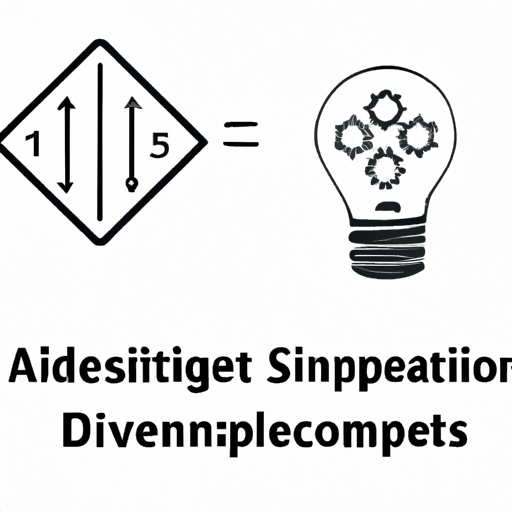
Application Development in Shift Registers for 1N5236B-T: Key Technologies and Success StoriesThe 1N5236B-T is a Zener diode widely utilized for voltage regulation and reference applications. While it may not directly relate to shift registers, its integration with shift registers can enhance various electronic designs. Below, we explore key technologies and success stories that highlight the synergy between shift registers and Zener diodes like the 1N5236B-T.
Key Technologies1. Digital Circuit Design2. Voltage Regulation3. Signal Conditioning4. Microcontroller Interfacing5. Communication Protocols1. Consumer Electronics2. Automotive Applications3. Industrial Automation4. Robotics5. IoT Devices Success Stories ConclusionThe integration of shift registers and Zener diodes like the 1N5236B-T is pivotal in various electronic applications. By leveraging the strengths of both technologies, developers can create robust, reliable, and efficient systems across diverse industries. Whether in consumer electronics, automotive, industrial automation, robotics, or IoT, the combination of these components fosters successful product development and innovation, ultimately leading to enhanced performance and user satisfaction.

Application Development in Drivers, Receivers, and Transceivers for 1N5234B-T: Key Technologies and Success StoriesThe 1N5234B-T is a widely used Zener diode that serves critical functions in voltage regulation and protection across various electronic applications. Its integration into drivers, receivers, and transceivers enhances the performance and reliability of these systems. Below, we explore key technologies and notable success stories that illustrate the impact of the 1N5234B-T in these contexts.
Key Technologies1. Voltage Regulation2. Signal Conditioning3. Protection Circuits4. Integration with Microcontrollers5. RF Applications1. Telecommunications2. Consumer Electronics3. Automotive Applications4. Industrial Automation5. IoT Devices Success Stories ConclusionThe 1N5234B-T Zener diode is a vital component in the development of drivers, receivers, and transceivers across various industries. Its capabilities in voltage regulation, signal conditioning, and protection make it indispensable in modern electronic designs. The success stories highlight its versatility and effectiveness in enhancing the performance and reliability of electronic systems. As technology continues to advance, the integration of components like the 1N5234B-T will remain essential in driving innovation in communication and electronic applications, ensuring that systems are robust, efficient, and capable of meeting the demands of the future.
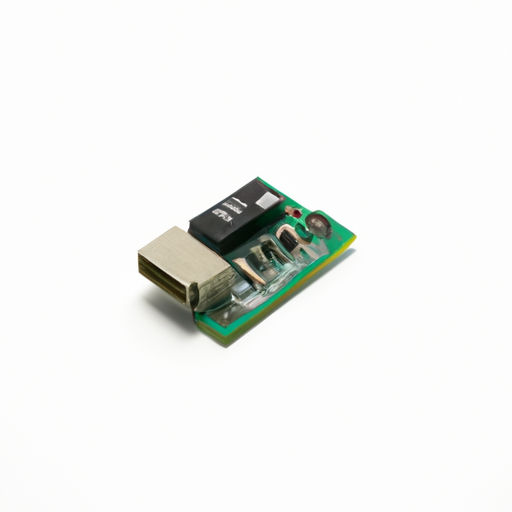
Certainly! Let's delve deeper into the core functional technologies of encoders, decoders, and converters, along with more detailed application development cases that illustrate their significance in various fields.
Encoders1. Rotary Encoders These devices measure the rotation of a shaft and output a corresponding electrical signal. They can be incremental (providing relative position) or absolute (providing a unique position value).2. Linear Encoders These measure linear displacement and are often used in applications requiring precise position feedback.1. Binary Decoders These devices take binary input and activate one of several outputs, commonly used in digital circuits.2. Demodulators In communication systems, these devices recover the original signal from a modulated carrier wave.1. Analog-to-Digital Converters (ADC) These devices sample analog signals and convert them into digital data for processing.2. Digital-to-Analog Converters (DAC) These convert digital signals back into analog form, allowing for playback or further processing.Robotics: In robotic systems, rotary encoders are used to provide feedback on joint angles, enabling precise control of movement. For instance, a robotic arm equipped with rotary encoders can perform tasks like assembly or painting with high accuracy.Robotics: In robotic systems, rotary encoders are used to provide feedback on joint angles, enabling precise control of movement. For instance, a robotic arm equipped with rotary encoders can perform tasks like assembly or painting with high accuracy.CNC Machining: Linear encoders are integral to CNC machines, allowing for precise control of tool positions. This ensures high-quality machining and reduces errors in production.CNC Machining: Linear encoders are integral to CNC machines, allowing for precise control of tool positions. This ensures high-quality machining and reduces errors in production.Television and Broadcasting: In digital TV receivers, decoders convert compressed video signals back into a format suitable for display. This allows viewers to watch high-definition content transmitted over the air.Television and Broadcasting: In digital TV receivers, decoders convert compressed video signals back into a format suitable for display. This allows viewers to watch high-definition content transmitted over the air.Data Routing: In networking, binary decoders are used in routers to direct data packets to the correct output port based on the destination address, ensuring efficient data transmission.Data Routing: In networking, binary decoders are used in routers to direct data packets to the correct output port based on the destination address, ensuring efficient data transmission.Medical Devices: In medical imaging, ADCs are used in ultrasound machines to convert analog signals from sensors into digital images, allowing for real-time diagnostics.Medical Devices: In medical imaging, ADCs are used in ultrasound machines to convert analog signals from sensors into digital images, allowing for real-time diagnostics.Consumer Electronics: DACs are widely used in smartphones and audio equipment to convert digital audio files into analog signals, enabling high-fidelity sound reproduction through speakers and headphones.Consumer Electronics: DACs are widely used in smartphones and audio equipment to convert digital audio files into analog signals, enabling high-fidelity sound reproduction through speakers and headphones.Case Studies: Look for specific case studies that detail the implementation of these technologies in real-world applications, such as autonomous vehicles or smart home systems.Case Studies: Look for specific case studies that detail the implementation of these technologies in real-world applications, such as autonomous vehicles or smart home systems.Technical Articles: Research articles that discuss advancements in encoder and decoder technologies, such as improvements in resolution, speed, and integration with IoT devices.Technical Articles: Research articles that discuss advancements in encoder and decoder technologies, such as improvements in resolution, speed, and integration with IoT devices.Development Kits: Experiment with development kits that include encoders, decoders, and converters to gain hands-on experience in designing and implementing these technologies in projects.Development Kits: Experiment with development kits that include encoders, decoders, and converters to gain hands-on experience in designing and implementing these technologies in projects. Decoders Converters ConclusionEncoders, decoders, and converters are foundational components in modern electronic systems, facilitating the conversion and processing of data across various applications. Their roles are critical in industries such as robotics, telecommunications, medical technology, and consumer electronics. Further ExplorationBy understanding the core functionalities and applications of encoders, decoders, and converters, engineers and developers can create innovative solutions that leverage these essential technologies.

Application Development in Latches for 1N5232B-T: Key Technologies and Success StoriesThe 1N5232B-T is a Zener diode widely utilized in electronic applications for voltage regulation and reference. While it may not be directly associated with latches in digital electronics, it plays a significant role in circuits that incorporate latches or similar components. Below, we explore key technologies and notable success stories related to the application of the 1N5232B-T in electronic development, particularly in conjunction with latches.
Key Technologies1. Voltage Regulation2. Reference Voltage Generation3. Noise Filtering4. Overvoltage Protection5. Temperature Compensation1. Consumer Electronics2. Automotive Applications3. Industrial Automation4. Telecommunications5. Medical Devices Success Stories ConclusionThe 1N5232B-T Zener diode is integral to various applications that may involve latches, particularly in ensuring stable voltage levels, providing noise filtering, and protecting against overvoltage conditions. Its integration into consumer electronics, automotive systems, industrial automation, telecommunications, and medical devices highlights its versatility and importance in modern electronic design. As technology continues to evolve, components like the 1N5232B-T will remain vital in developing reliable and efficient electronic systems, particularly those that incorporate latches and other digital components.
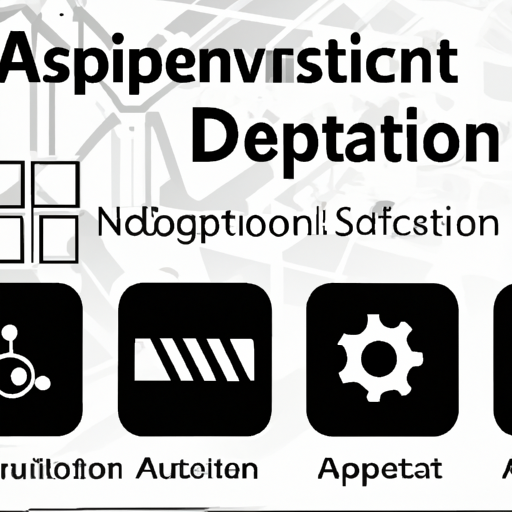
Application Development in Buffers, Drivers, Receivers, and Transceivers for 1N4148-T: Key Technologies and Success StoriesThe 1N4148 is a well-known silicon switching diode that has become a staple in electronic design due to its fast switching speed, reliability, and versatility. Its applications span across various domains, particularly in circuits involving buffers, drivers, receivers, and transceivers. Below, we explore the key technologies associated with these applications and highlight notable success stories.
Key Technologies1. Buffers2. Drivers3. Receivers4. Transceivers1. Telecommunications2. Consumer Electronics3. Automotive Applications4. Industrial Automation5. Embedded Systems Success Stories ConclusionThe 1N4148 diode has established itself as a versatile and essential component in various applications involving buffers, drivers, receivers, and transceivers. Its fast switching speed, reliability, and cost-effectiveness make it a preferred choice in many electronic designs. As technology continues to advance, the 1N4148 is expected to remain a key player in the development of innovative electronic solutions across multiple industries, from telecommunications to automotive and beyond. Its adaptability ensures that it will continue to meet the evolving demands of modern electronics.
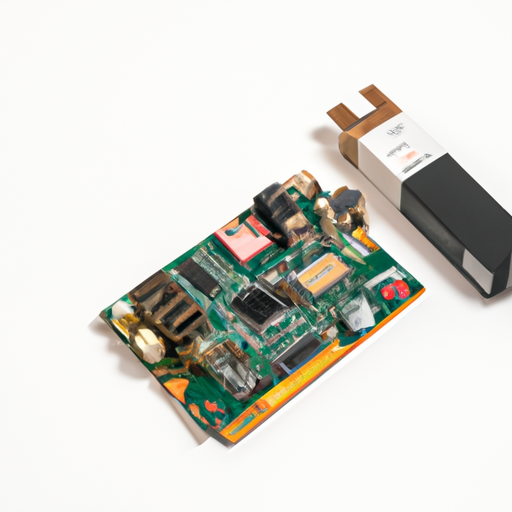
Overview of Digital to Analog Converters (DAC)Digital to Analog Converters (DACs) are crucial components in modern electronics, enabling the conversion of digital signals (typically binary) into analog signals. This conversion is essential for interfacing digital systems with the analog world, allowing devices such as speakers, sensors, and displays to process digital information.
Core Functional Technologies of DACs1. Resistor Ladder (R-2R Ladder) DACs2. Sigma-Delta DACs3. Pulse Width Modulation (PWM) DACs4. Current Steering DACs5. Integrated Circuit DACs1. Audio Processing2. Video Equipment3. Signal Generation4. Control Systems5. Telecommunications1. High-Fidelity Audio Systems2. Medical Imaging3. Automotive Applications4. Consumer Electronics5. Industrial Automation Key Applications of DACs Application Development Cases ConclusionDigital to Analog Converters are essential in bridging the digital and analog domains, enabling a wide range of applications across various industries. Understanding the core technologies and application cases of DACs is vital for developing effective solutions tailored to specific needs, whether in audio, video, telecommunications, or industrial automation. As technology advances, the role of DACs will continue to evolve, driving innovation in electronic design and application development.
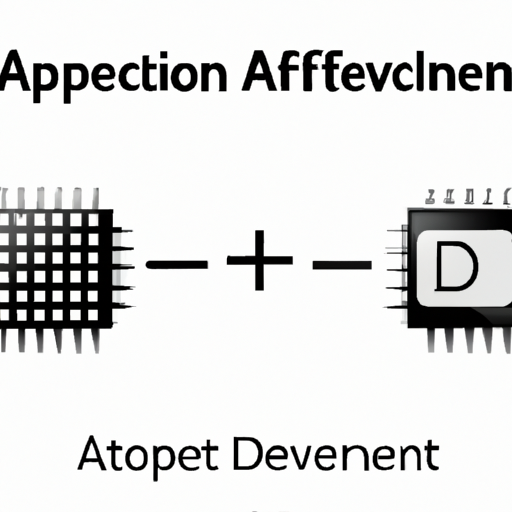
Application Development in Analog to Digital Converters (ADC) for 1N4004-T: Key Technologies and Success StoriesThe 1N4004-T is a widely used silicon rectifier diode, primarily found in power supply circuits. While it does not directly relate to Analog to Digital Converters (ADCs), its role in power management is crucial for systems that incorporate ADCs. Below, we explore key technologies in ADC development and highlight success stories that demonstrate the integration of ADCs in applications utilizing the 1N4004-T.
Key Technologies in ADC Development1. Delta-Sigma ADCs2. Successive Approximation Register (SAR) ADCs3. Pipeline ADCs4. Integrated ADCs5. Low-Power ADCs6. Wireless Communication1. Smart Metering2. Medical Devices3. Industrial Automation4. Consumer Electronics5. Automotive Applications Success Stories ConclusionWhile the 1N4004-T diode is not an ADC, its importance in power supply circuits is vital for the reliable operation of systems that utilize ADCs. The integration of ADC technology across various applications has led to significant advancements in smart metering, medical devices, industrial automation, consumer electronics, and automotive systems. As technology continues to evolve, the collaboration between components like the 1N4004-T and ADCs will remain essential for developing innovative solutions across multiple industries. This synergy not only enhances performance but also drives the development of smarter, more efficient electronic systems.
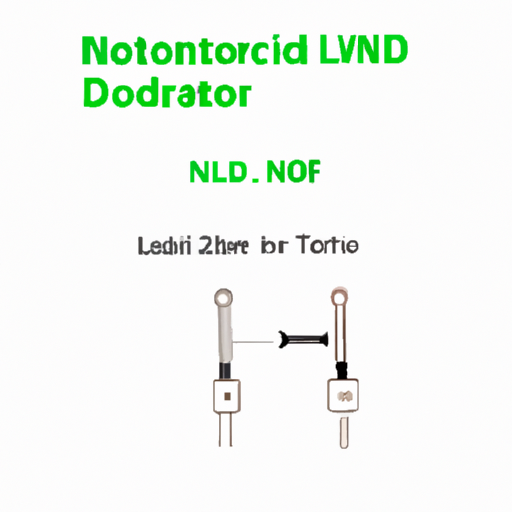
Overview of Linear Voltage Regulators and Low Drop-Out (LDO) RegulatorsLinear Voltage Regulators are fundamental components in electronic circuits, ensuring a stable output voltage despite fluctuations in input voltage or load conditions. Among these, Low Drop-Out (LDO) Regulators are particularly advantageous for applications that require high efficiency and low noise, especially when the input voltage is only slightly above the desired output voltage.
Core Functional Technology1. Basic Operation2. Key Features3. Types of LDOs1. Battery-Powered Devices2. Consumer Electronics3. Industrial Applications4. Automotive Applications5. Medical Devices Application Development Cases ConclusionLinear Voltage Regulators, particularly Low Drop-Out (LDO) Regulators, are vital in modern electronic design. Their ability to provide stable, low-noise power with minimal dropout voltage makes them indispensable across a wide range of applications, from consumer electronics to industrial and medical devices. As technology continues to evolve, the demand for efficient and reliable voltage regulation is expected to grow, driving ongoing innovation in LDO design and application. The integration of advanced features such as improved thermal management, enhanced noise performance, and higher current capabilities will further expand the utility of LDOs in future electronic systems.


lang_service_time
lang_select_kefu
Yeonsin Lian



